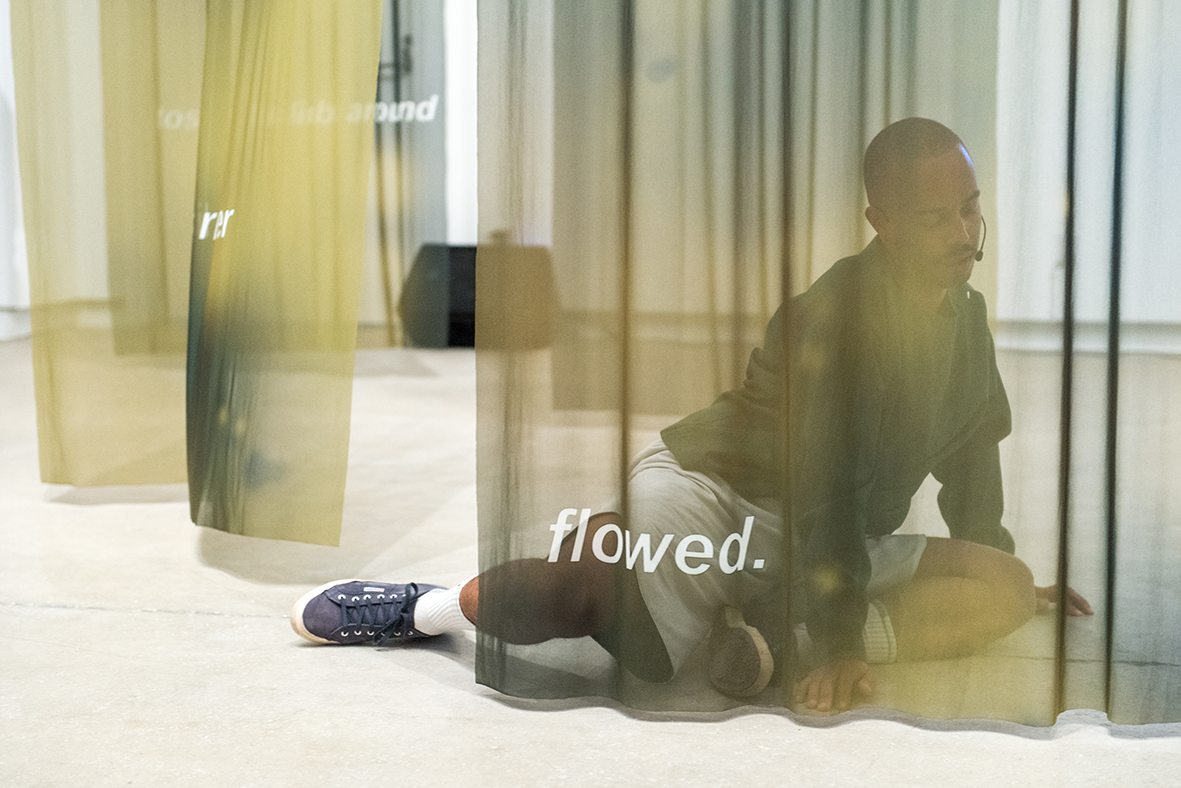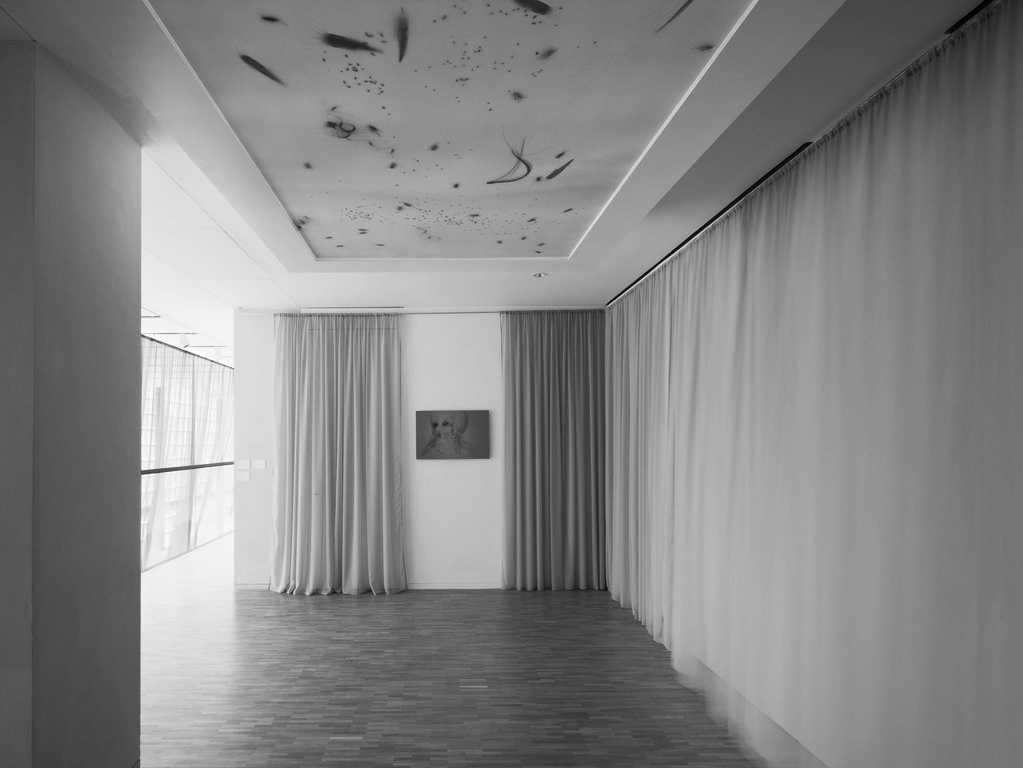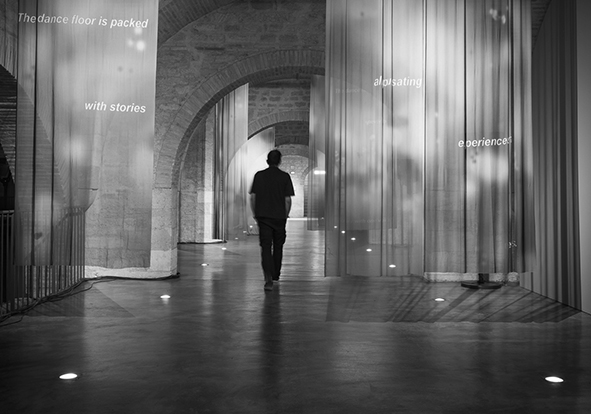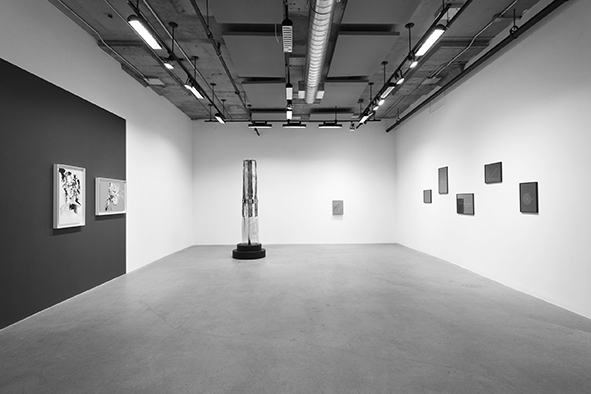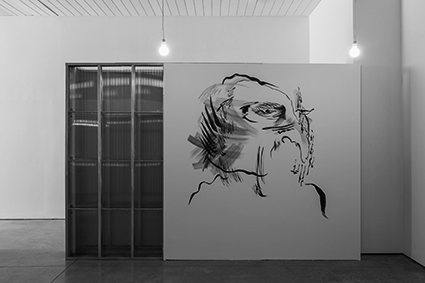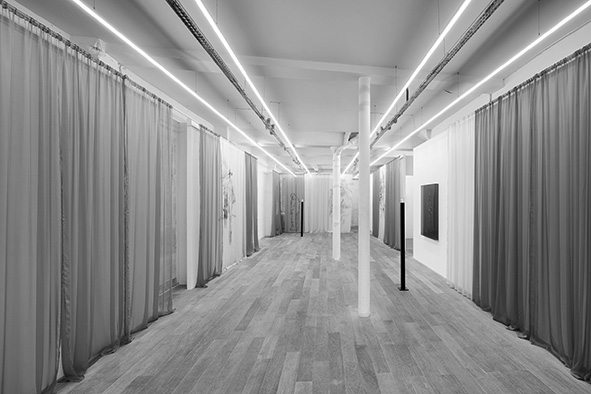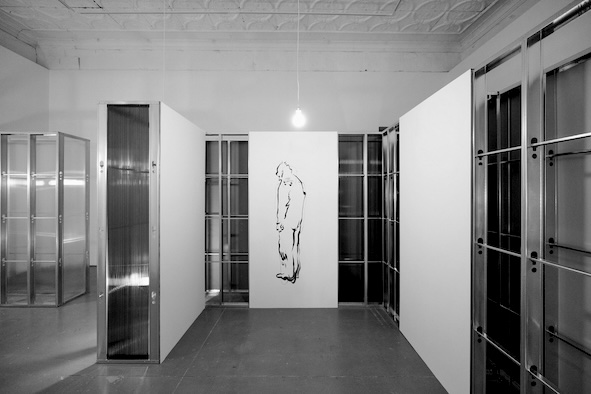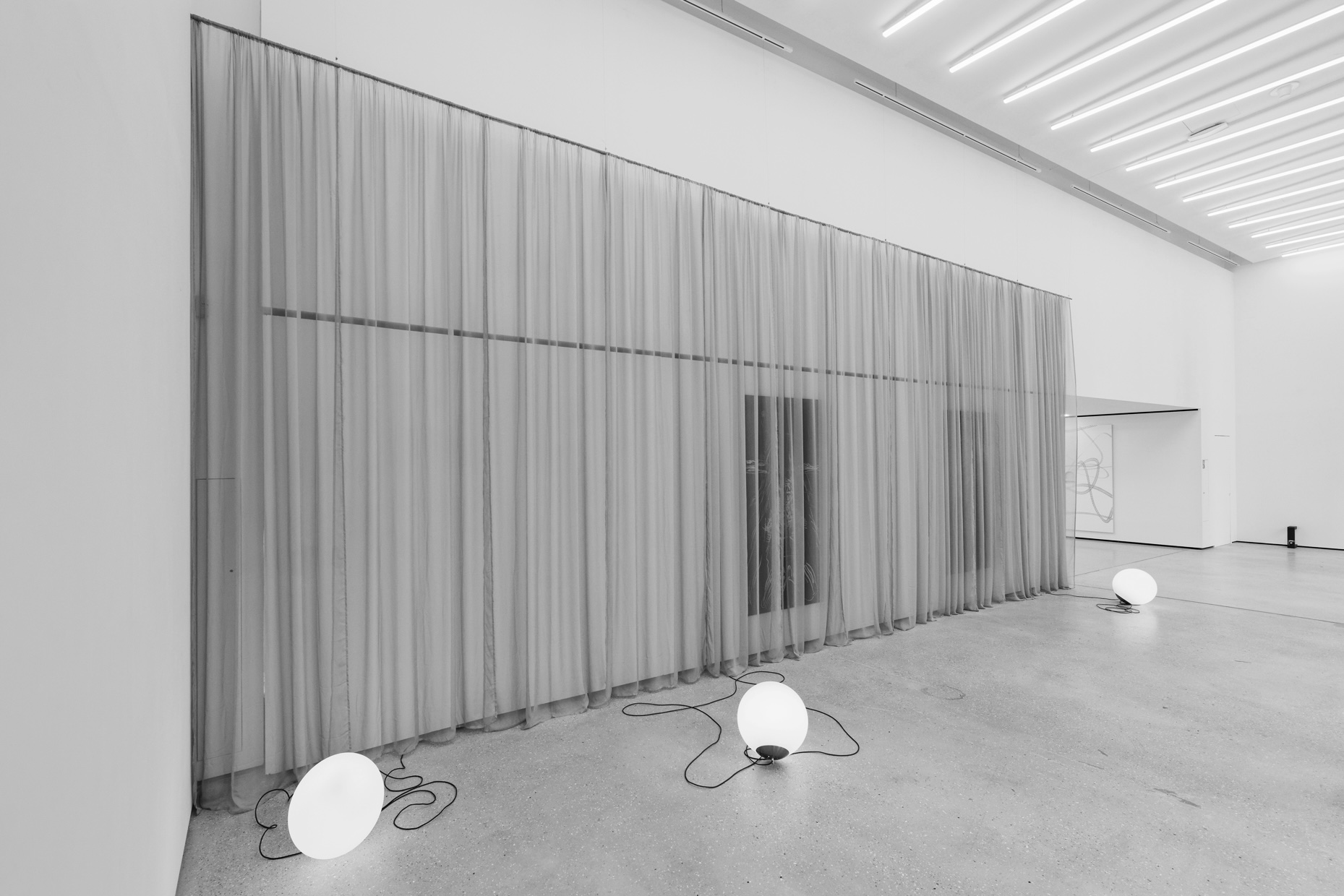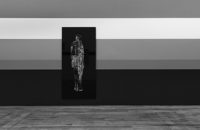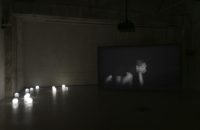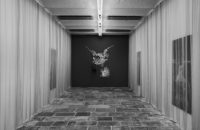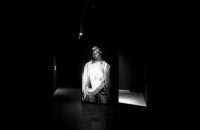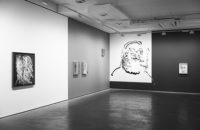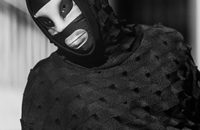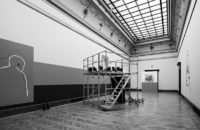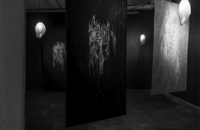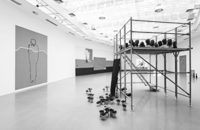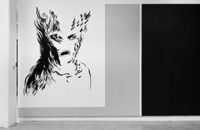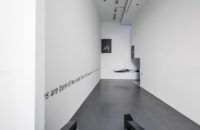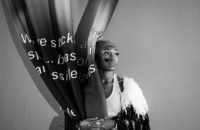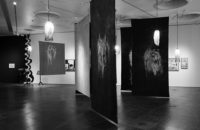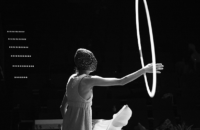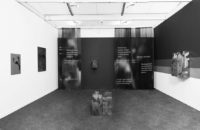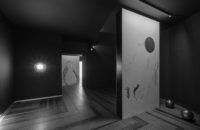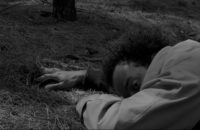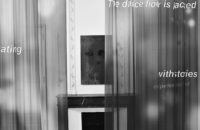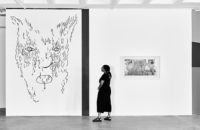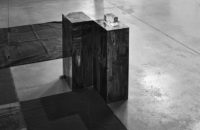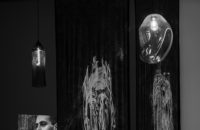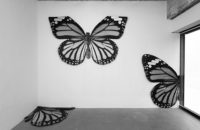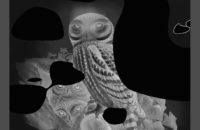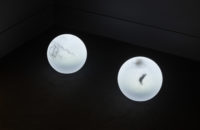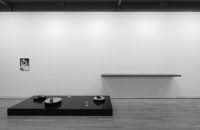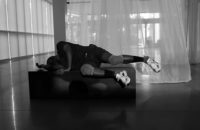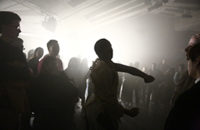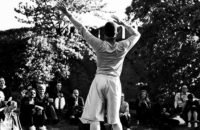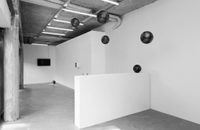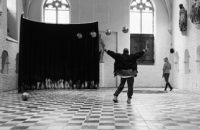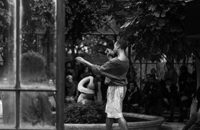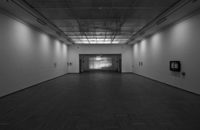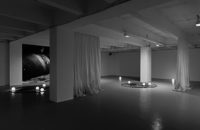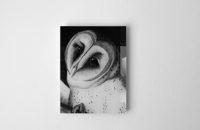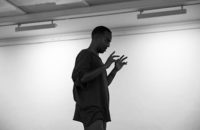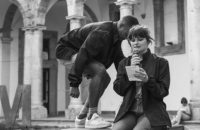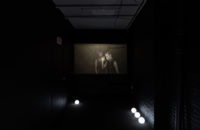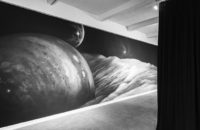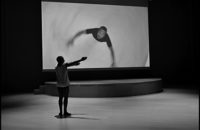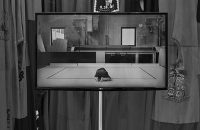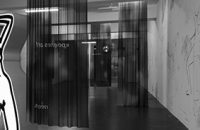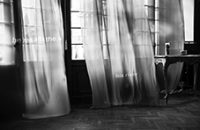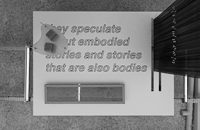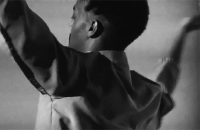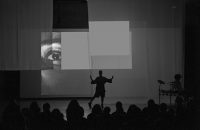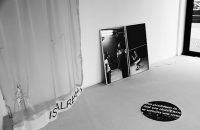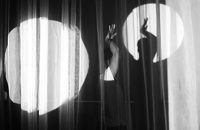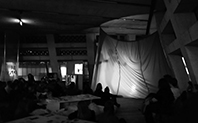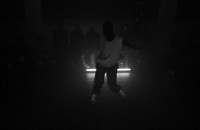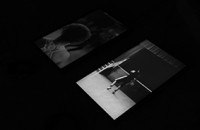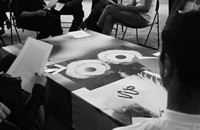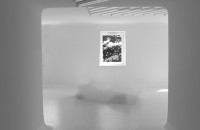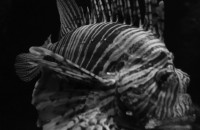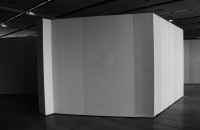Within the realm of a white square outlined by black tape on the floor, his body stirs in slow and measured motions. Eyes closed and moving steadily with unexpected bursts, his legs are cartwheeled round over his body or rolled across the floor, igniting the viewer’s desire for music to disrupt the silence and for him to jump into a dance routine. Instead gravity pulls his weight in often awkward, uncomfortable positions moving out of the white box, no longer contained.
This is the performance Seeking after the Fully Grown Dancer *deep within*, created and performed in 2016 in Toronto by the artist Paul Maheke. In green gym-wear and green shorts pulled up to his knees, he attempts to grasp a fully authentic performance, depending entirely on impulse and spontaneity. In his other one-man performances, Maheke dances with atmospheric lighting to pumping electronic music. Through performance and installation, his research in cultural identity, sexuality and gender display cool and visceral presentations of his body in which the artist himself takes centre stage and proceeds to dance on his own in front of an audience or camera.
Maheke is a French artist who lives and works in London. He has risen to prominence in the last two years after being awarded the South London Gallery Graduate Residency 2015-2016 with his exhibition I Lost Track of the Swarm, 2016, exhibited in the first floor galleries. In this exhibition Maheke wanted to combine the two spaces of the gallery with the outside world, drawing in the everyday life of the Peckham Road through the bay windows. He thinks about the effect of light onto space and how this manipulates the dynamic of the atmosphere within. The show incorporated dance pieces, looped film of his dance, as well as interior objects that transformed the space into a lilac arena of contemplation. This was also a feature within his work in the Diaspora Pavilion at the Venice Biennale, where natural light and subtle wind gave body to his delicate curtains that partitioned the gallery space and the external world.
In the spring of 2017 Maheke performed Mbu at Tate Modern’s BMW Live events in the tanks, repeating the performance for the Walker Art Gallery’s Coming Out: Sexuality, Gender and Identity exhibition in Liverpool. Mbu combined multi-layered video projection with dance, sound and live percussion. Maheke’s lone figure danced to a soundtrack of his father’s singing in his native language of Lingala, spoken in the Democratic Republic of Congo. The performance highlighted power relations between spectator and subject, exposing how these can filter into the broader socio-political landscape. ‘Mbu’ means ocean or sea, a subject relevant to Maheke’s current research in the theory of Hydro-Feminism, which examines the interconnectedness of the female body with the natural waters that surround us. Maheke has used this concept as a metaphor to liberate his creative exploration around memory, identity and the diasporic body. In using dance as a medium he can examine the mental and physical gestures of fluidity and formlessness, spilling these ideas over the stage as he dances.
Reminiscent of Trajal Harrell’s work and his Hoochie Koochie exhibition at the Barbican last summer, inspired by the Harlem Vogue balls of 80’s, Maheke’s work explores queer sexuality by re-framing the black male body, temporarily freeing it from the clutches of western history and politics, using subjectivity to guide this new perception. The performance allows the space for the viewer to question the relations between dance, performance art and the ways in which these performances work to reveal educate and perhaps entertain.
—Charlotte dos Santos for Contemporary Art Society, 2017
read online: here
